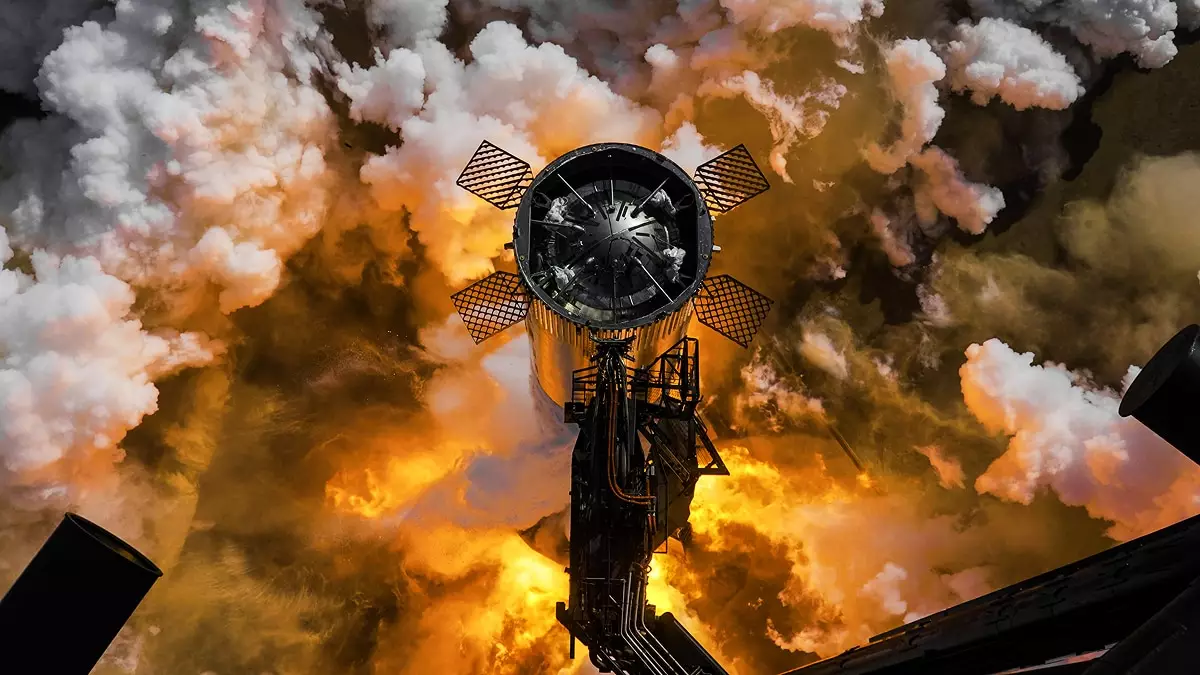SpaceX is making significant strides in its ambitious Starship program, a pivotal aspect of the company’s vision for interplanetary travel. Recent static fire tests were conducted for both stages of this advanced launch system, which signals a crucial phase in preparation for an upcoming integrated flight test. The testing took place at SpaceX’s Starbase facility in Texas, where engineers meticulously monitored the performance of both the Super Heavy booster and the Starship’s second stage.
During these static fire tests, the Super Heavy booster, equipped with 33 powerful Raptor engines, underwent a full-duration test designed to replicate the intense conditions encountered during an actual launch. This rigorous assessment is fundamental for validating the booster’s readiness and reliability. Meanwhile, the Starship upper stage also engaged in extensive engine testing, with experimentation of variable thrust conditions aimed at simulating different flight scenarios. These preliminary tests not only ensure that the components function optimally but also provide data for fine-tuning the propulsion system critical for future missions.
Path to the Upcoming Integrated Flight Test
Following the completed tests, SpaceX plans to stack the Super Heavy booster with the Starship upper stage, moving closer to the next integrated flight test, slated to be known as IFT-8. Industry reports suggest this flight could take place by the end of February, contingent upon securing a final go-ahead from the Federal Aviation Administration (FAA). As regulatory considerations continue to be a significant hurdle, SpaceX remains focused on meeting all compliance requirements necessary for advancement in this highly contested field.
SpaceX’s excitement for the year includes plans for multiple Starship launches, which align with the company’s broader strategy to enhance its reusable rocket technology. The previous flight test, IFT-7, in January 2025, showcased the ambitious trajectory SpaceX is pursuing. Although the Super Heavy booster was successfully captured after launch, the loss of communication with the second stage around mid-flight presents challenges that the engineers are keen on addressing. The reported debris over the Caribbean suggests that improvements in flight stability and descent control are paramount objectives as the team prepares for subsequent missions.
Strategizing for Future Missions and NASA Collaborations
The overarching goal for the Starship program extends beyond test flights; SpaceX aims to support a multitude of missions, including significant engagements with NASA’s Artemis program. The Starship lander is primed for operational use in Artemis 3, with aspirations to return astronauts to the lunar surface, targeting a mission in 2027. However, thorough testing is crucial before Starship is fully operational for human spaceflight missions and various commercial endeavors.
As SpaceX continues to refine its Starship system, each test and subsequent improvement serves as an essential building block toward eventual deployment. The future of space exploration is hopeful with advancements such as these, as industry leaders like SpaceX work to redefine the limits of human potential in space travel. The outcome of these carefully orchestrated tests will ultimately dictate the timeline and success of SpaceX’s ambitions to make interplanetary travel a reality, while also holding immense promise for the broader aerospace industry.

